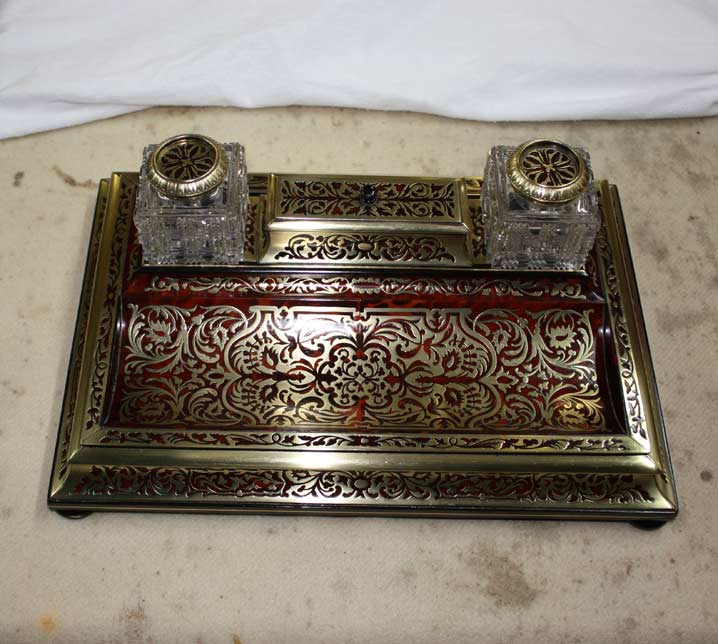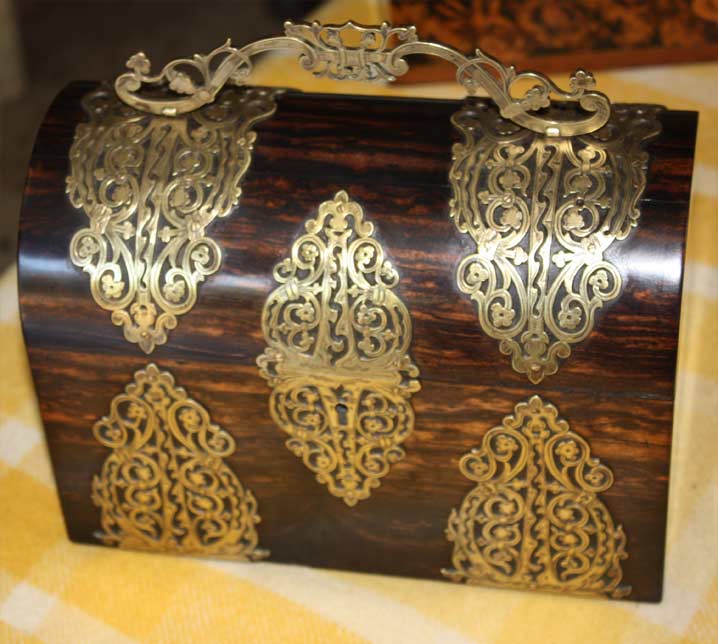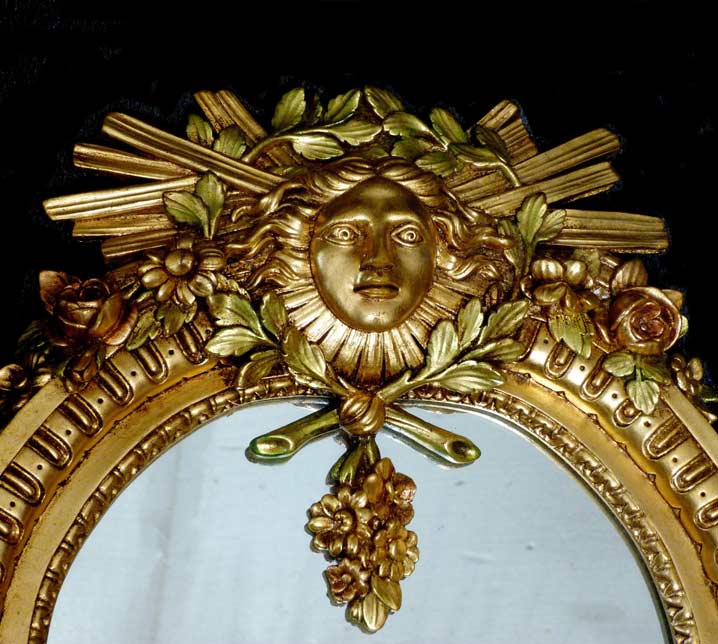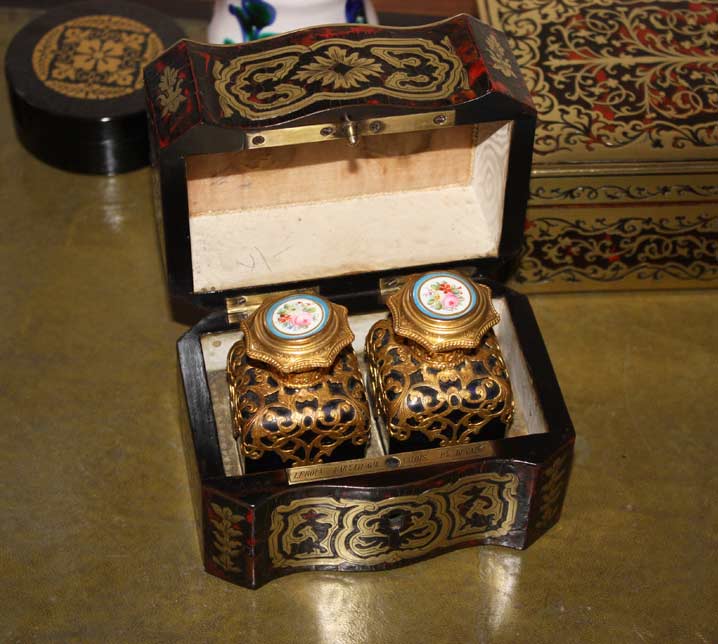
Antique Furniture Brass Inlay
Brass Inlay is yet another form of inlay or marquetry which can create a beautiful effect through the use of brass sheet, in combination with other materials. Traditionally it was the practice of Andre Charles Boulle, who at the beginning of the 18th Century in France, favoured the use of materials such as copper, pewter, silver and tortoiseshell to create striking and contrasted effects. However brass and tortoiseshell formed the main elements of his designs. Ebony was keenly sought and used by Boulle and numerous ebonistes who followed, many reproducing his style right through to the 19th Century and beyond.
In England, around the early 19th Century, specialised brass Inlay work was revived and promoted by the Prince Regent. By 1815, two men came to prominence and soon established themselves in London as exponents of the Boulle technique - namely Thomas Parker and Louis Le Gaigneur - whose work survives as testimony to their skills. Parker in particular favoured beautiful scrolling foliate patterns to enrich borders and friezes of tables to which these intricate designs were applied.



In brief, the method employed in the Boulle style (referred to also as tarsia a incastro), involves finely cutting sheets of veneer of various materials which have been superimposed to form a stack or packet. After cutting, disassembling and interchanging the contrasting veneers, they are arranged to form part or all of the design being constructed. This can achieve two effects - one known as 'premier partye' referring to that part of the composition forming the inlay or motif ; the second known as 'contre partye' referring to the background element.
In England, around the early 19th Century, specialised brass Inlay work was revived and promoted by the Prince Regent. By 1815, two men came to prominence and soon established themselves in London as exponents of the Boulle technique - namely Thomas Parker and Louis Le Gaigneur - whose work survives as testimony to their skills. Parker in particular favoured beautiful scrolling foliate patterns to enrich borders and friezes of tables to which these intricate designs were applied.
Both of these effects are produced from the one cutting process. For example after the elements are separated and interchanged, the two contrasting materials (brass/tortoiseshell) form the design, either as an inlay or a background.
Here at Classic Antique Restoration, work of this sort is of special interest, and is reproduced and restored, using the traditional method described above. Please refer to images attached as examples of both these aspects.





